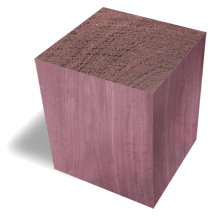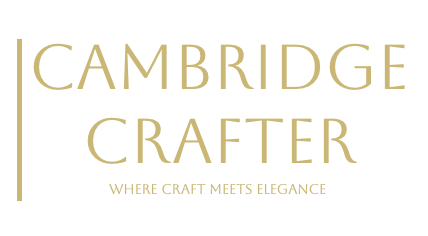
Purple Heart
Purpleheart, scientifically Peltogyne spp., commonly Peltogyne paniculata or Peltogyne venosa, is a tropical hardwood from the Fabaceae family, native to Central and South America, primarily found in the Amazon Basin of Brazil, Guyana, and Suriname, with some species extending to Mexico. It grows in tropical rainforests, reaching heights of 100–150 feet with trunk diameters of 3–5 feet, often with a straight bole and buttressed roots in older trees.
The heartwood of Purpleheart is renowned for its vivid, natural purple colour, ranging from a bright lavender to a deep, rich violet when freshly cut, though it can darken to a dark purple-brown or nearly black with prolonged exposure to light and air. The sapwood is a pale cream or whitish, sharply distinct. The grain is typically straight but can be interlocked or wavy, with a medium to fine texture and a moderate natural lustre, giving it a polished appearance when finished. Some pieces may show subtle figuring, such as faint streaks or mottling, adding to its visual appeal.
Purpleheart has a density of around 850–1,050 kg/m³, making it a very hard, heavy, and durable wood with excellent strength and stability once seasoned. It’s highly resistant to decay, moisture, and insects, thanks to its natural resins, making it suitable for both indoor and outdoor applications. The wood can be challenging to work due to its hardness, which dulls tools quickly, and its interlocked grain may cause tearout during planing or sawing. It glues and finishes well, though its natural resins can interfere with adhesion—degreasing with a solvent like white spirit is recommended. The purple colour can bleed into finishes if not sealed properly, and while oil-based finishes enhance its vibrancy, UV exposure will eventually mute the hue unless protected.
When worked, Purpleheart has a mild, slightly resinous scent, with a hint of spice that fades after finishing. In the UK, it’s used for high-end furniture, flooring, decking, and boatbuilding, where its durability and striking colour are prized. It’s also popular for turned objects like bowls, pens, and knife handles, as well as musical instruments (e.g., guitar bridges or drumsticks), where its density contributes to a bright, resonant tone. The wood’s bold aesthetic makes it ideal for decorative inlays or accent pieces in bespoke craftsmanship.
Purpleheart is moderately priced for an exotic hardwood, though its cost can vary depending on availability and import regulations. Peltogyne species are not listed on CITES Appendices, but some are considered vulnerable by the IUCN due to overexploitation and habitat loss in the Amazon, with logging pressures increasing as other tropical hardwoods become scarcer. In the UK, it’s often sourced from certified suppliers to ensure sustainability, making it a dramatic and durable choice for projects where its unique colour can be a focal point.
